Book Published March 26, 2019 by Ten Speed Press.

I've never been to Hawaii, but it is vivid in my mind.
I imagine beaches, salty breezes, bright coral flowers. I taste shave ice, roasted pork, and pineapple.
The author of Aloha Kitchen:Recipes from Hawai'i, Alana Kysar, asks the reader to close their eyes and think about what comes to mind when you think Hawaii. This is easy to do, regardless of whether or not you've visited the Aloha State.
The Hawaii of my imagination and the Hawaii from Aloha Kitchen turn out to be very similar: picturesque and filled with incredible food.
Aloha Kitchen has been a food primer on this place I've never been. A place that is more varied in cuisine and people than I anticipated.
Kysar writes it is a global mix of people namely she says, early Hawaiians, Westerners, Chinese, Japanese, Portuguese, Koreans, and Filipinos. They brought with them dishes and food cultures that now make up the story of Hawaii.
Kysar, a Hawaiian native living in L.A. and blogger at FixFeastFlair.com, says in her introduction that she wrote this book in part because her readers responded well to the local Hawai'ian recipes of her childhood, and because she saw many recipes that centered mostly around ham and pineapple labeled "Hawaiian."
She says, "And that was about the time when I started to think long and hard about writing a book about local Hawai'i food, because here's the thing: just because (and maybe especially because) a dish has pineapple doesn't mean it's Hawaiian" (Page 5).
So, I'm not alone in equating pineapple with Hawaii. I learned from this book that Hawaii is a place I need to visit and eat in to really understand.
Kysar reveals a place and cuisine that I can't wait to learn more about, even after spending many hours with this book.
Sections: Aloha; Appetizers (Pūpū); Sides; Pork (Pua'a); Chicken (Moa); Beef (Pipi); From the Sea (Mea'ai Kai); Noodles (Nulu); Sweets (Mea 'Ono); Snacks ('Ai Māmā); Drinks (Pau Hana); Sauces
Difficulty Level: Intermediate. You might find yourself folding dumplings, making poi from Taro root or a multi-step sweet like the Sweet Potato Haupia Bars. Don't be daunted as a beginner though, you can certainly work your way to all the recipes over time.
Ingredients: Many recipes contain an ingredient or two that can be difficult to source. I had to buy a few things from Amazon, namely Hawaiian Salt ('alaea), mochiko flour, and Li Hing powder. Buying taro root, and furikake both required trips to specialty markets. Depending where you live, some of the recipes might not be possible without substitutions.
Overall: I learned so much from this book: new techniques like handling fresh taro root or steaming leaf-wrapped fish with pork fat; of new ingredients like Li Hing powder; of new dishes, like Haupia, a dessert which was one of my favorites from this book. I have a greater understanding of Hawai'i's people and how history has had its hand in the cuisine we see today. And, most importantly, I know this is a place I have to go to to eat.
Will I keep it?: Yes. For one, I have no other books on Hawaiian cuisine and this is a fantastic overview with reliable recipes. Two, I see some recipes ending up on our usual rotation.
The Test:
Takuan — Page 69
Takuan are small daikon pickles, made with Hawaiian salt, sugar, chili, rice vinegar, and yellow food color for the signature neon-yellow, sunny coating.
The pickles are not complicated to put together, but you will have to source the Hawaiian salt. I found it on Amazon, but it might be available at specialty shops. I had never used this salt before, but loved the extra mineral punch it lent to vegetables.

Don't buy parsnips thinking they are daikon radishes (like me). Your pickles will not turn out well (luckily I didn't get through the whole recipe).
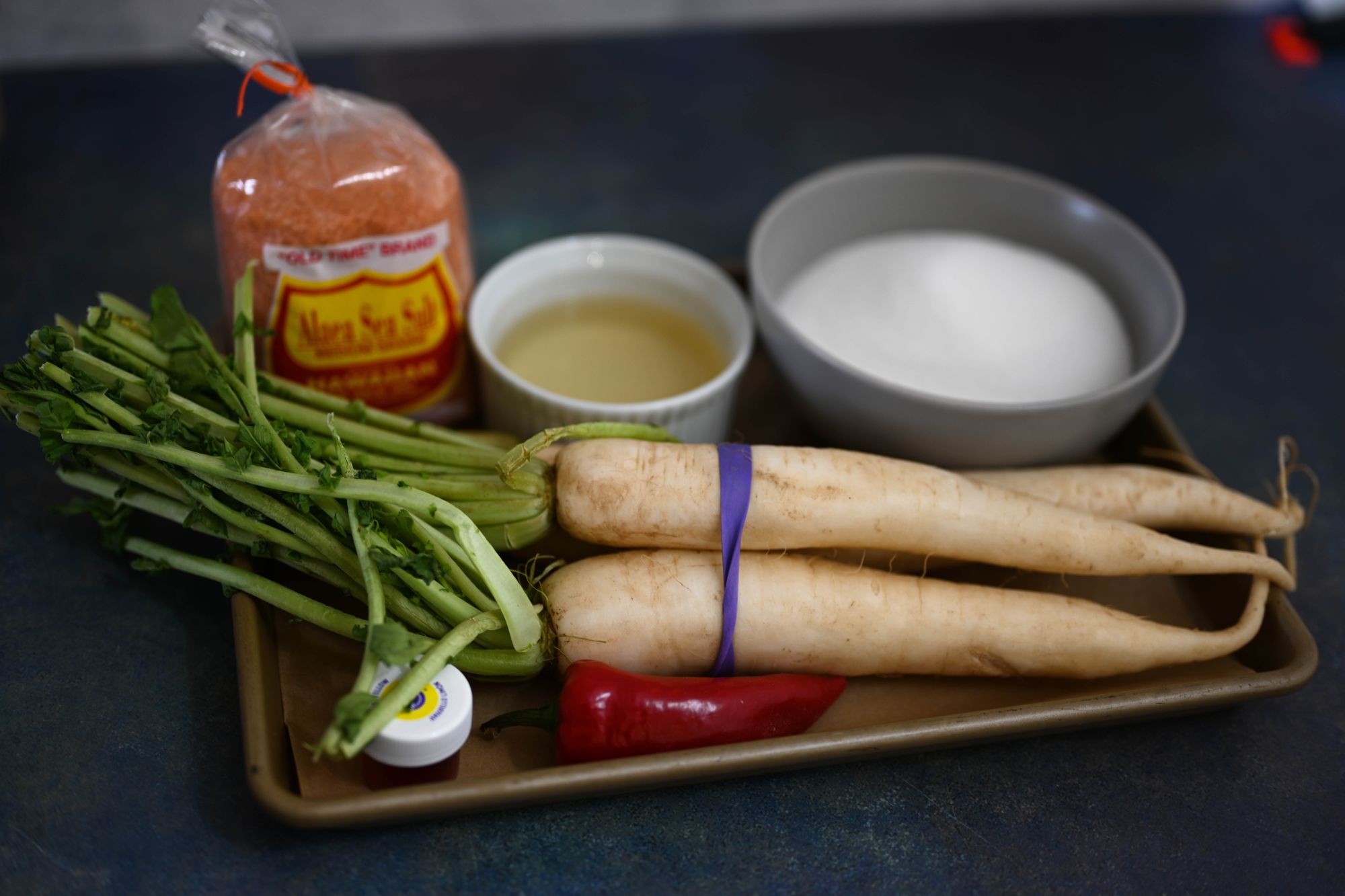
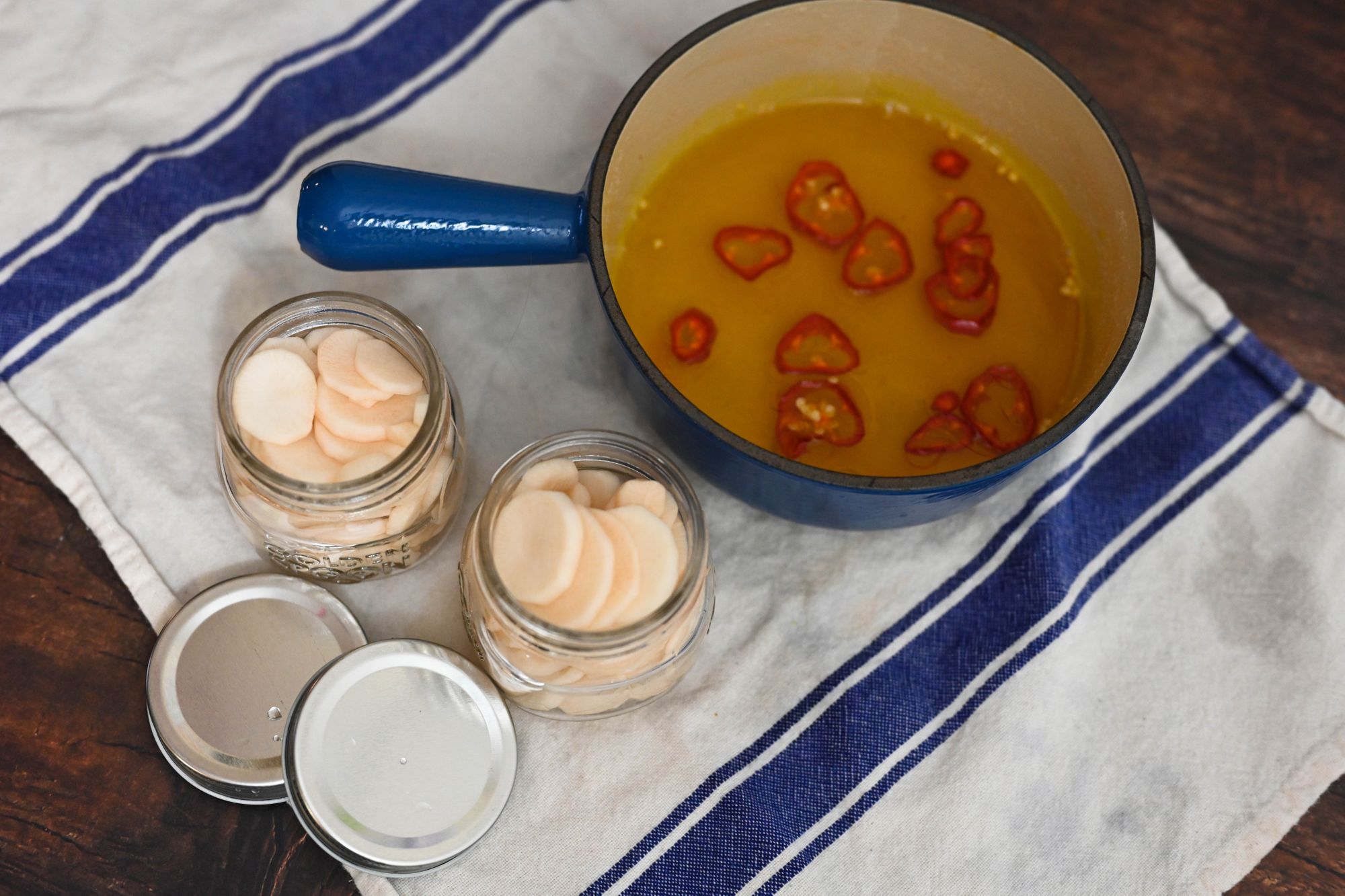
Chicken Adobo—Page 107
I had a faint idea of Chicken Adobo before making this recipe. It is one of those foods I thought I had eaten it before, but I couldn't remember where or what it tasted like.
Surprise, this recipe was really simple to put together. Brown the chicken, set aside, pop in the other ingredients. Pop the chicken back in, coat in sauce, pop on lid. Done.
The mise was also so simple, it could easily be a pantry meal with chicken from the freezer.
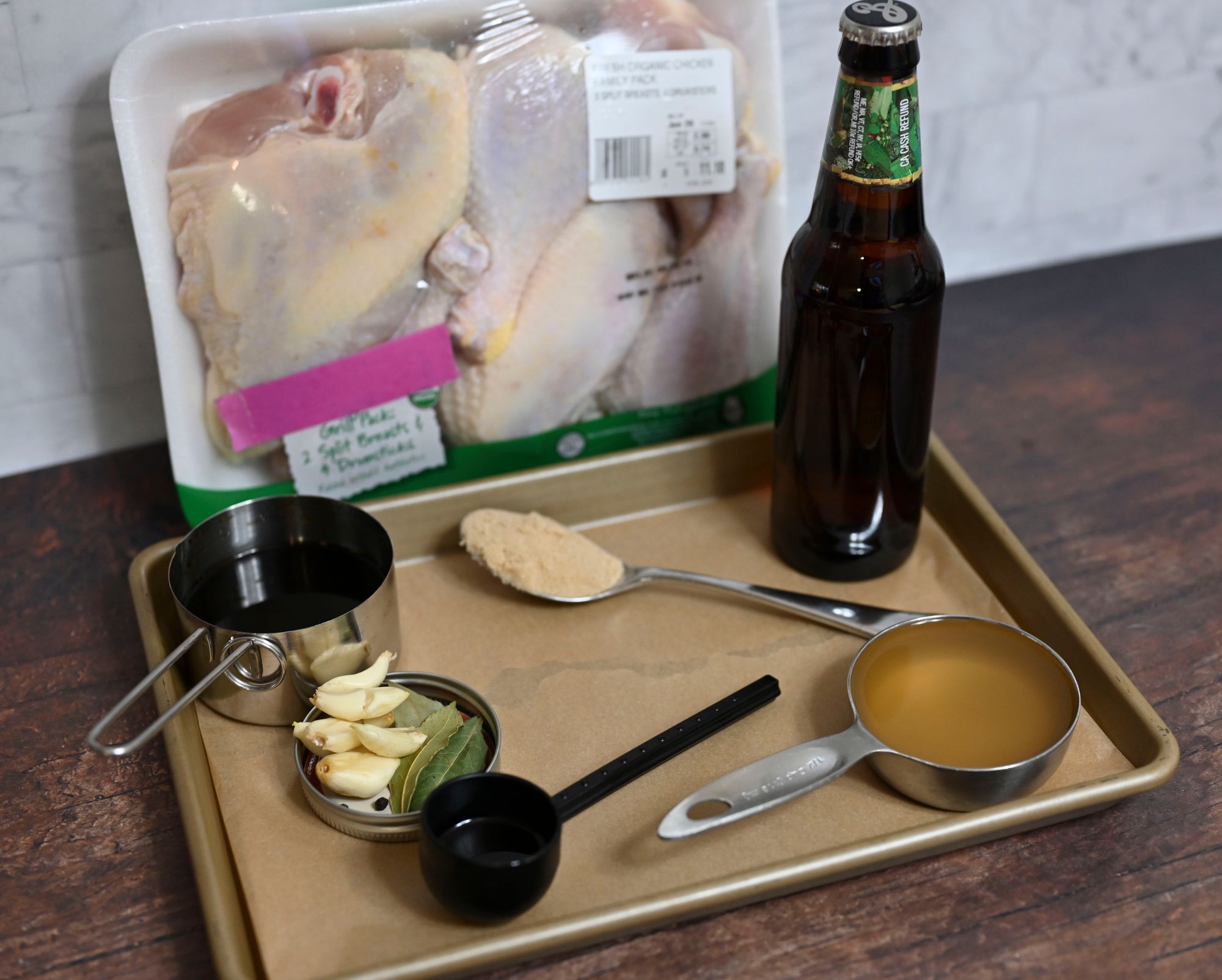
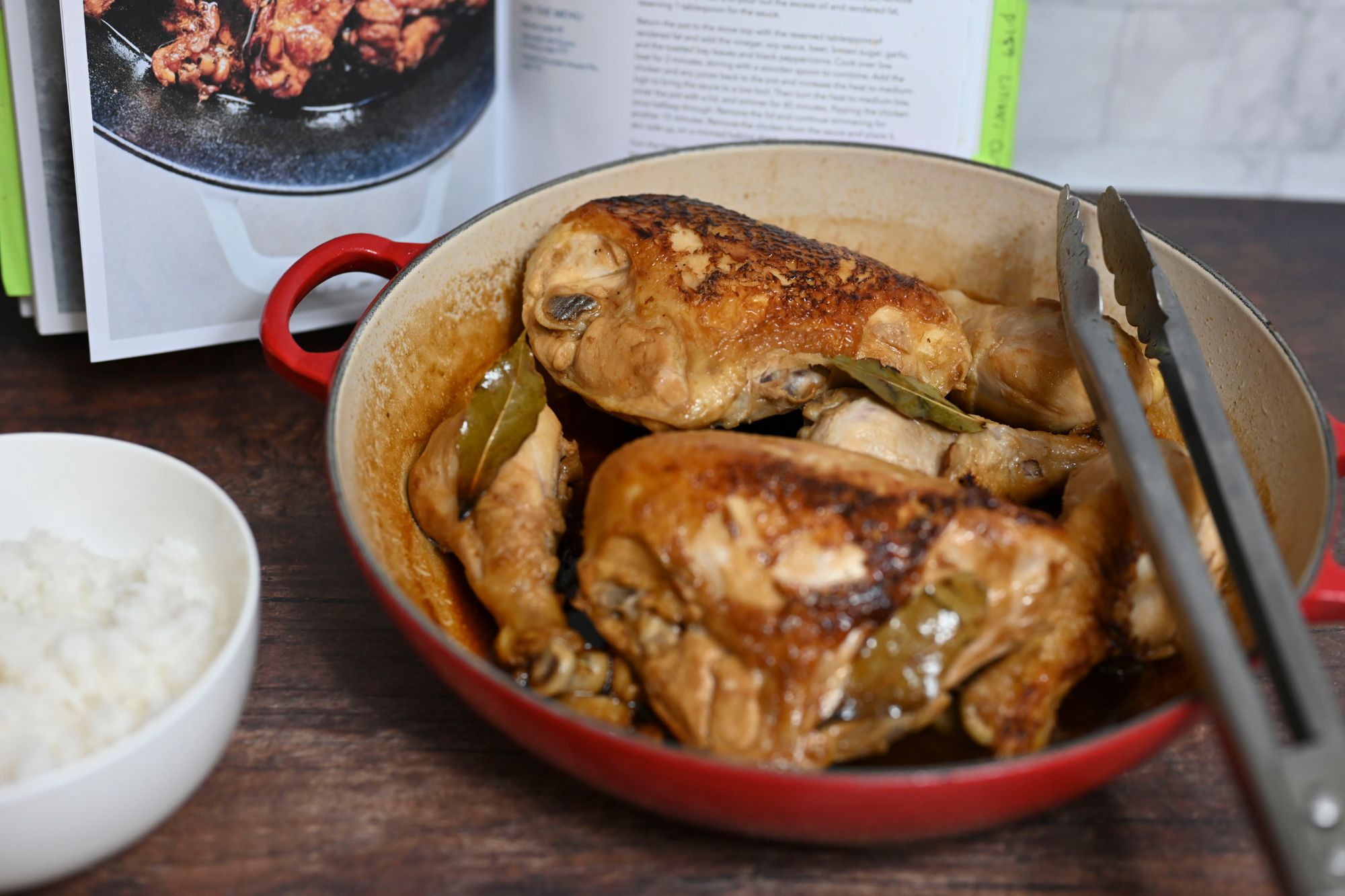
The hardest part for me would probably have been the rice, but luckily, I bought frozen rice from Trader Joe's. Sorry, not sorry.
Meat Jun—Page 123
My daughter said I should add this to our dinner lineup (which doesn't really exist, unless you include mac and cheese, pizza and pasta with red sauce which we have almost every week). So, its no surprise that she enjoyed this intensely marinated Korean-style beef. It embodies flavor, but isn't intimidating, even to someone who only eats white food some days.
The ingredients were plentiful, thus the mise en place took a bit of time. If you assemble while you prep, your job will be much faster.
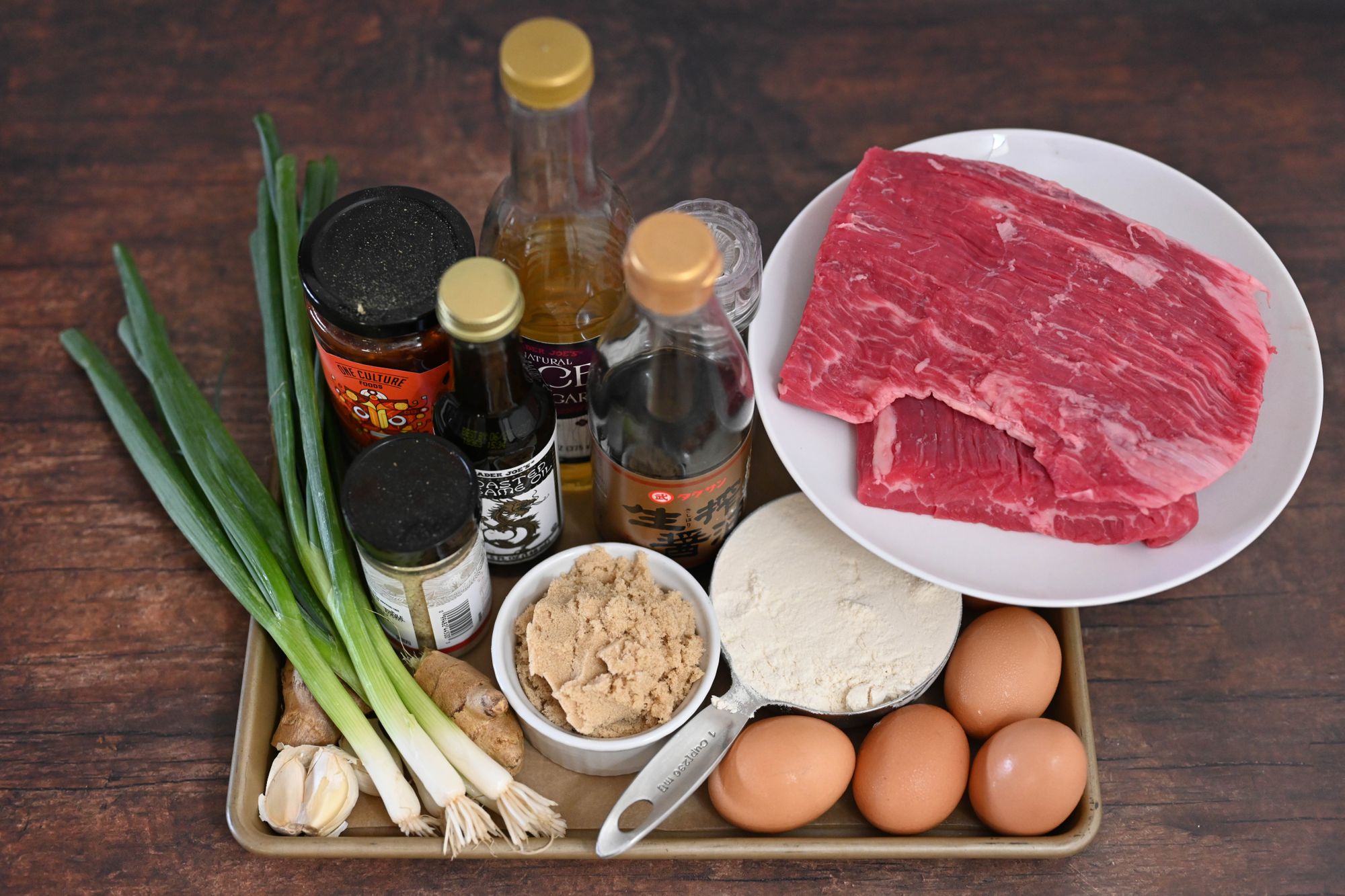
The tedium of this recipe came from both the assembly and the egg/flour dredging of the beef. This time consumption is familiar with any recipe that requires dredging as it is basically a one-by-one process. Note: the excess flour and marinade-muck stuck to my pan with claws so strong that I had to boil with baking soda twice and destroy two sponges just to get it clean.
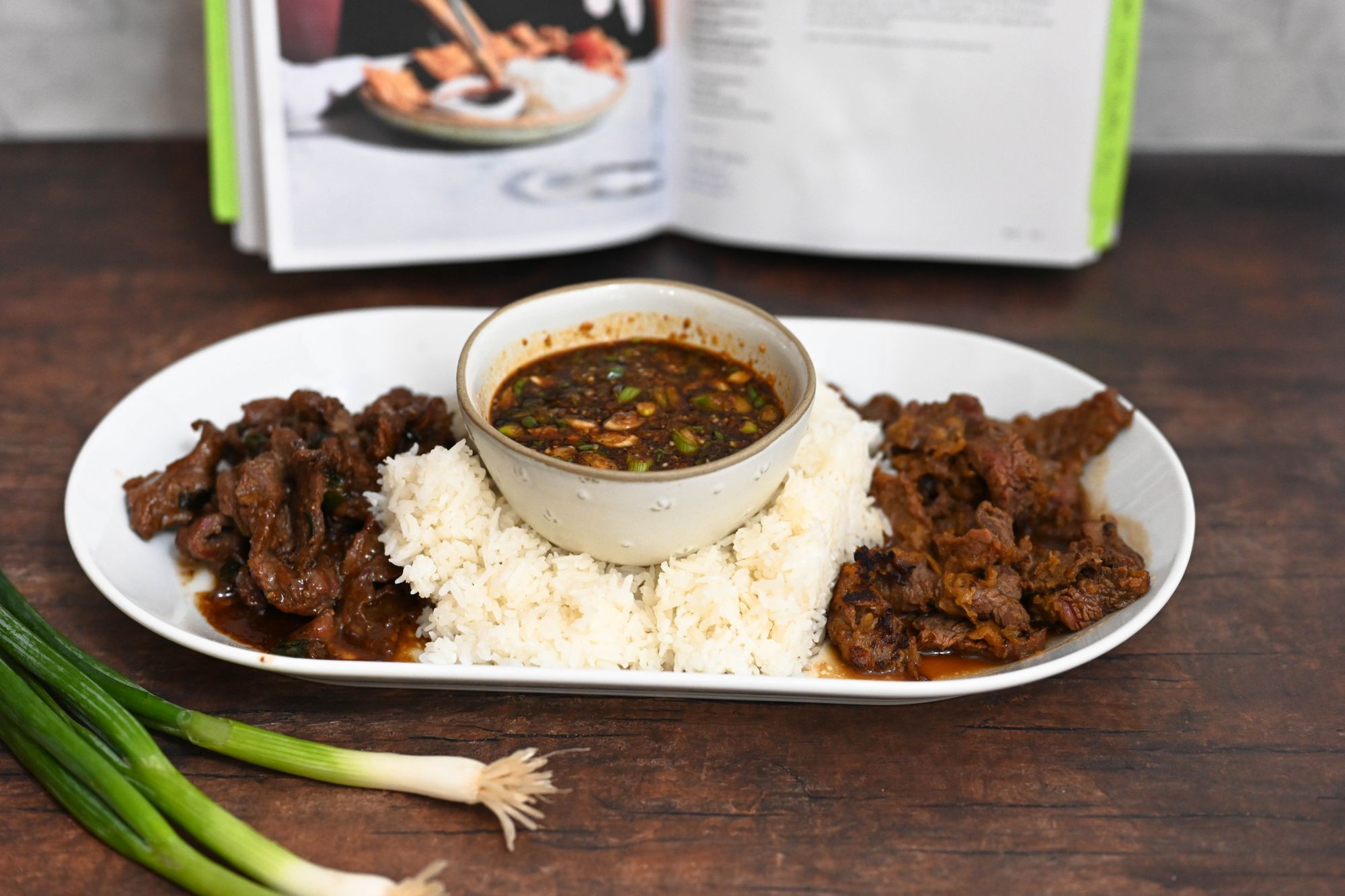
Butter Mochi—Page 167
I really, really wanted to like this cake. Unfortunately, I had to special order the Mochiko sweet rice flour (no problem) and the butter from the cake leaked all over my oven (problem), the smoke forcing me to fan my apartment building's smoke detector with vigor as to not set off a chain reaction for the whole building.
I had to take out the mochi mid-bake and shut off the oven while I fanned the smoke detector. I wiped out the bottom of the oven once it wasn't scorching and re-started the baking.
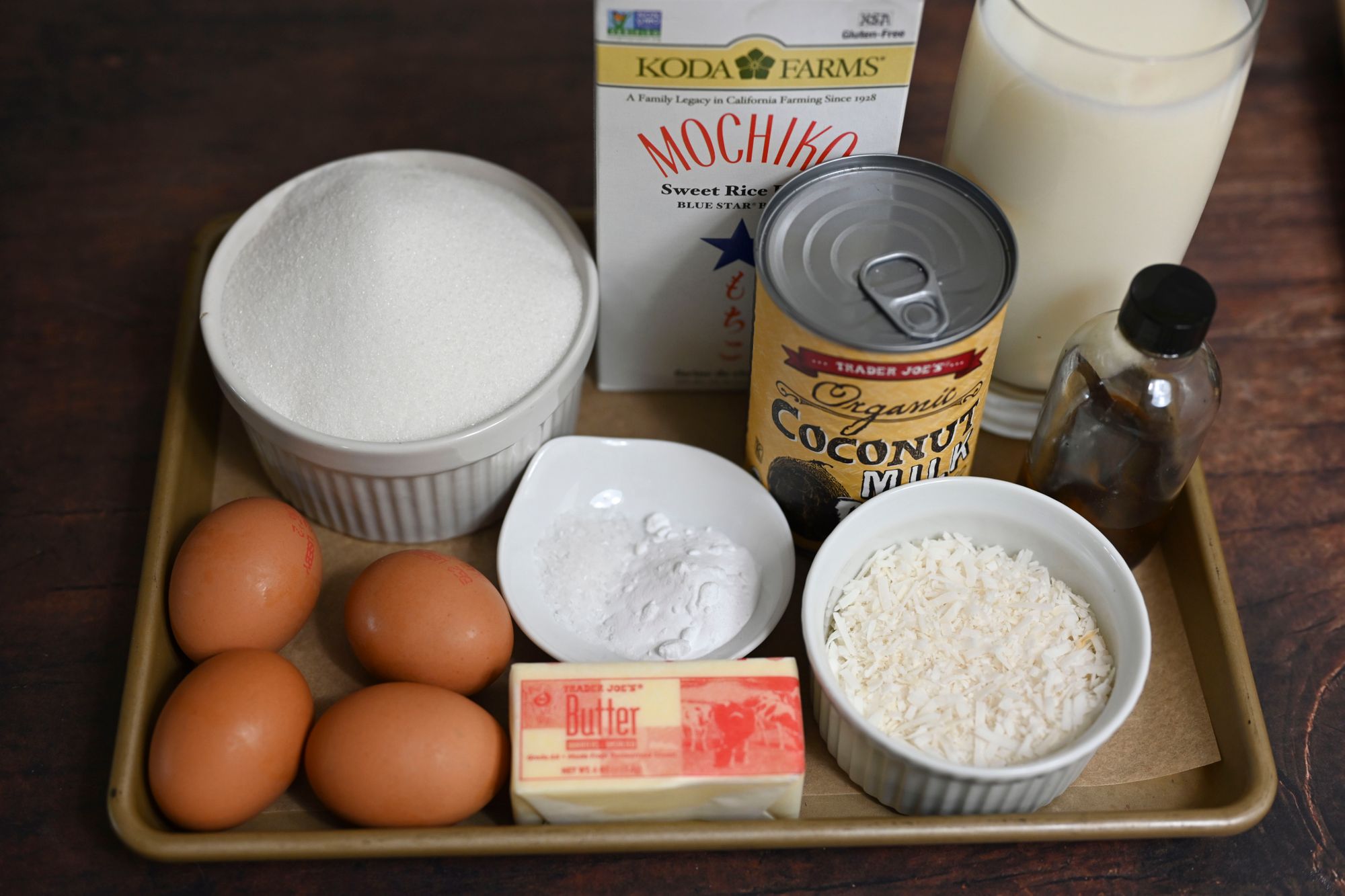
Not surprising, my mochi burned.
I don't recommend start-stop baking any dessert. Regardless, I held on hope that it it would work just this time.
Maybe put a lined sheet pan under your baking dish? Or, leave aside some of your batter so it doesn't bubble over? I don't know. Let me know how it goes for you. I'll be testing this again as my special-order sweet rice flour came in a two-pack.

Haupia—Page 168
When I Googled "Hawaiian food" to start researching this book, I found a top ten that included a version of Haupia. I had to try making it. Plus, I love most creamy desserts!
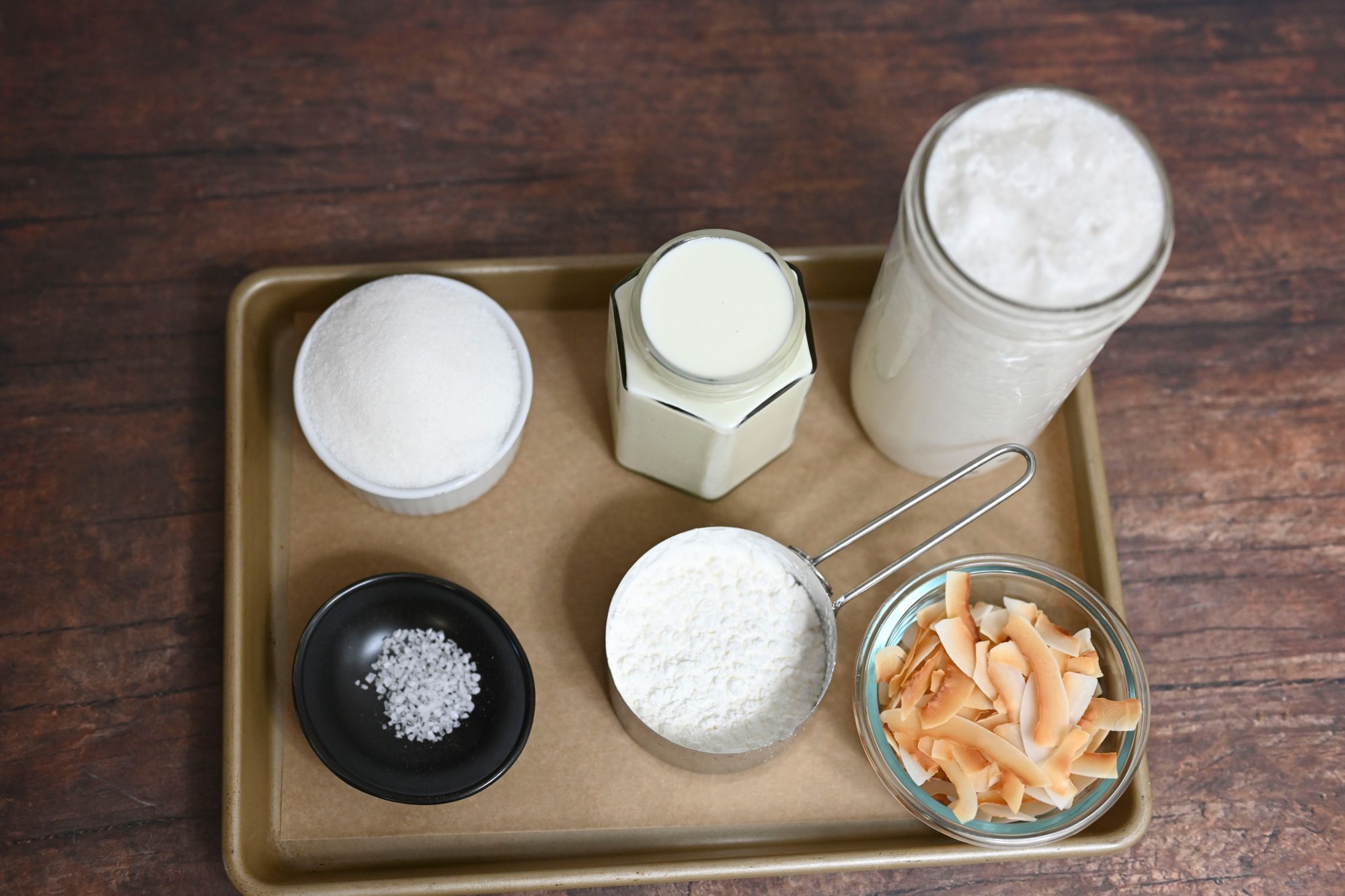
This was quite easy to put together, and the results were both beautiful and irresistible. I ate a few less-than-perfect bars while taking photographs, and a few more later in the night guided by the light of my fridge.
The two hardest parts of the recipe are one: not burning the coconut, and two: removing the custard from the pan. I put plastic wrap under the custard in the hammock method popular when baking brownies. I also placed it over the custard as instructed to prevent a skin from forming on the top layer.
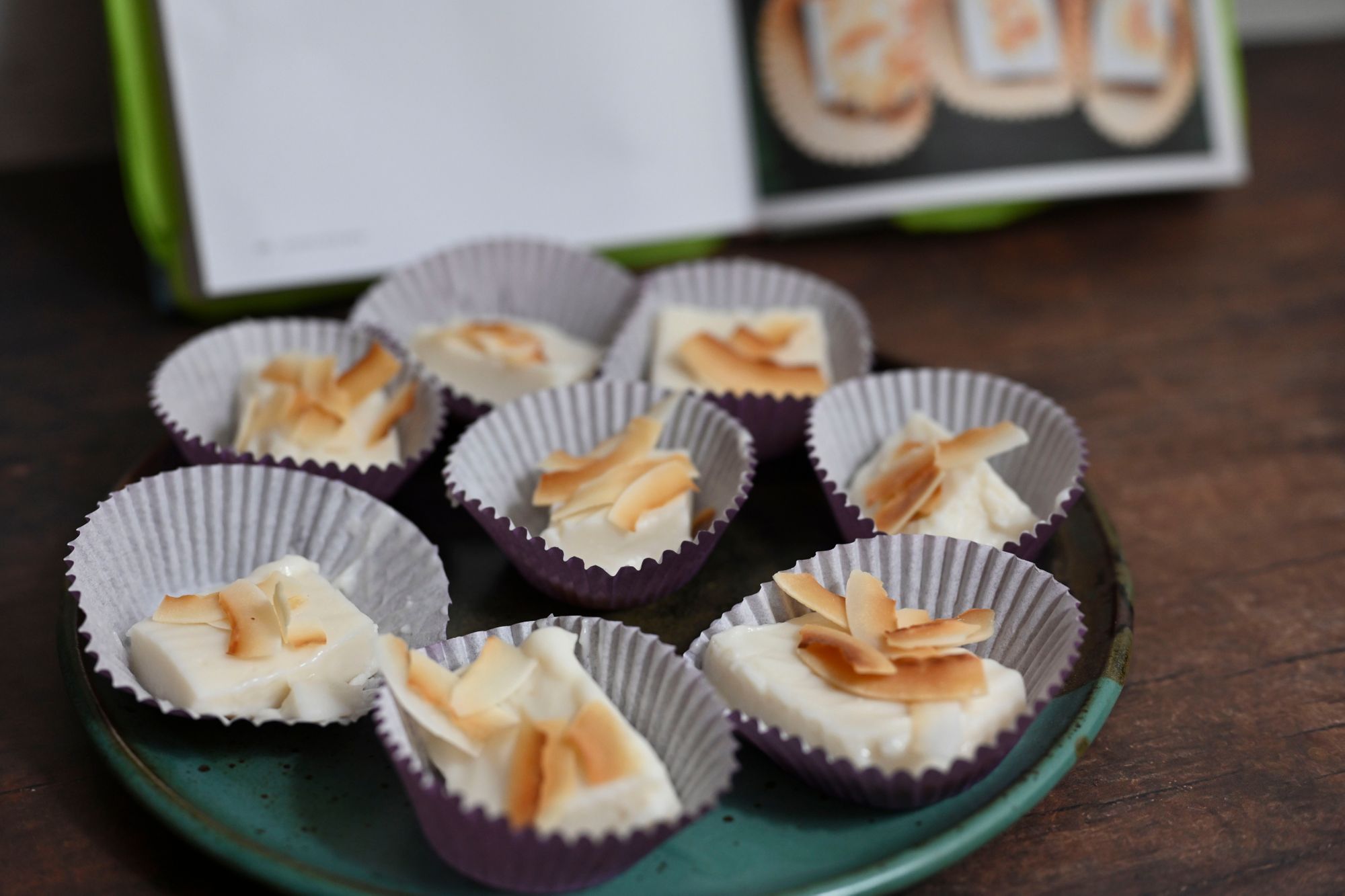
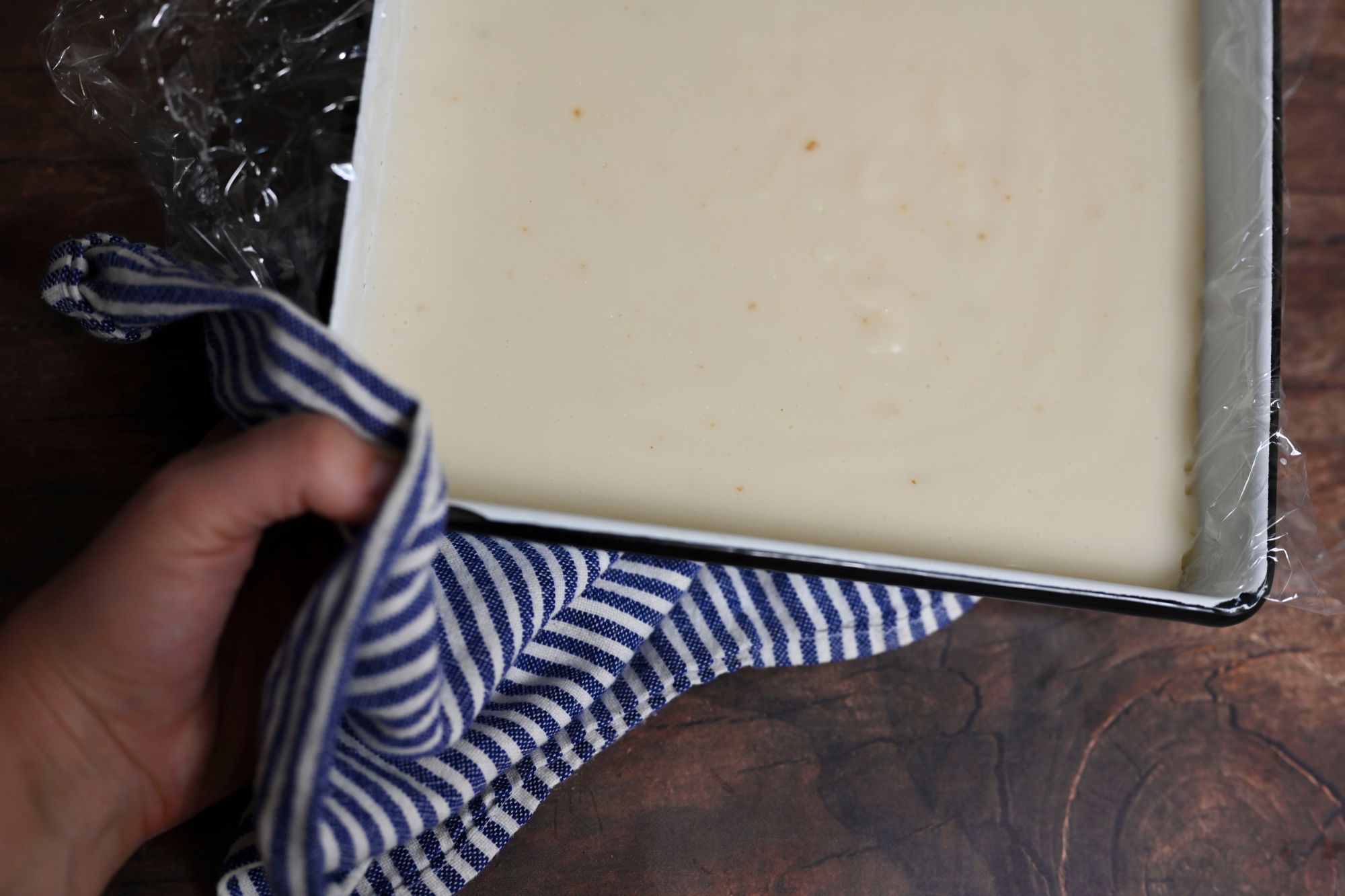
Sweet Bread Rolls—Page 191
Move over King's Hawaiian. These rolls are easy to make and quite delicious. Sure, they take time, as any homemade bread with a rise time does, but give this a try.
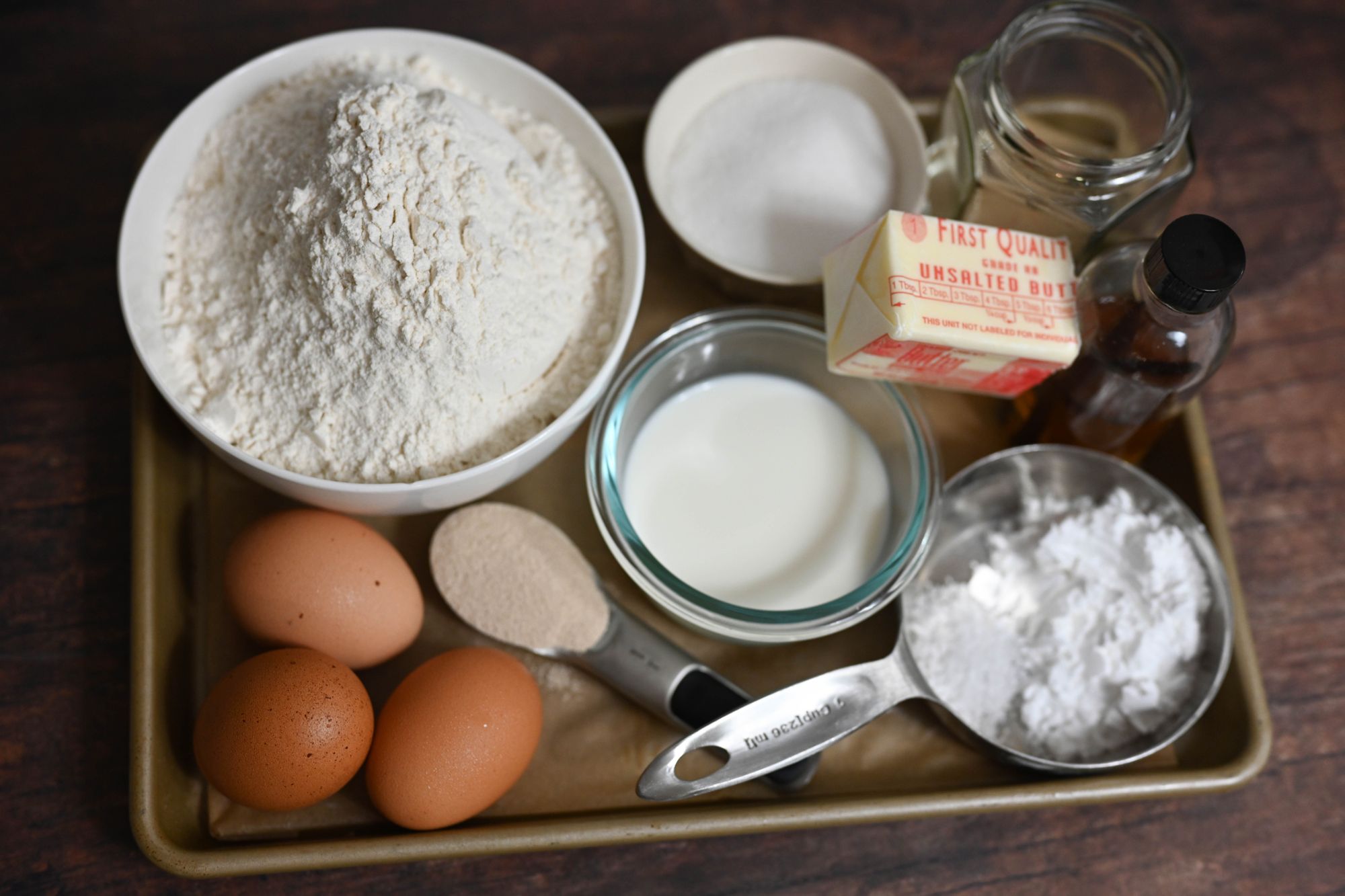

I went about 20 minutes over the recommended final rise time, which is why I think I had such large bubbles in some of the rolls.

Enjoy with many dishes from the book or with a slab of cold butter as I did a few times, for breakfast, and snacks.
Papaya Seed Dressing—Page 218
I don't like to waste food, but waste I did. It wasn't until I bought a third papaya before I finally made this dressing.
I was expecting really good things from this dressing, and maybe it would make a better marinade for me than a salad dressing. The texture and bitterness of the seeds was distracting, so it could benefit from scooping a few out before blending. I would also increase the lime, but I like my dressings quite acidic.
I've cooked the book and will again. Now I can't wait to try Hawaiian food in person.
As an Amazon Associate I earn from qualifying purchases.
